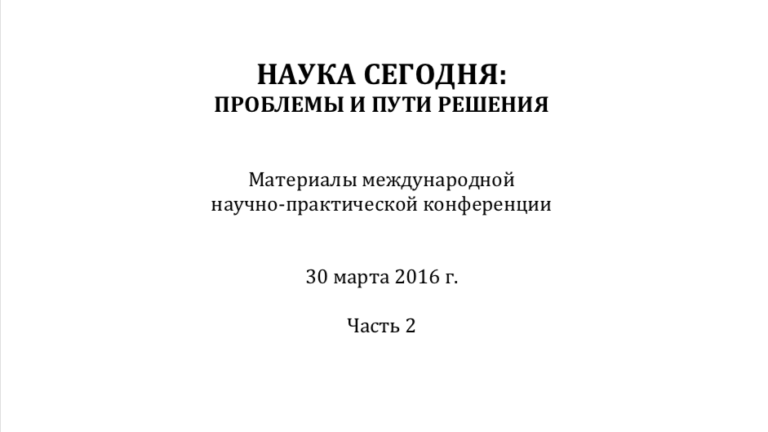
March 6, 2024
Zankavets, U, Popov, V. The Body Composition Assessment of the KHL and NHL Professional Ice Hockey Players
Science Today: Problems and Solutions (Russia) · October, 2016
Abstract
The article presents the results of the body composition assessment of the KHL ice hockey players using the bioimpedance analysis and quantative characteristics of body fat component of the KHL and NHL players using caliperometry. A comparative analysis of the 2 methods is presented.
Introduction
The study of body composition has not lost its relevance for almost 100 years [5, 7], which is evidenced by the rapid growth of research in this field [6]. Of particular interest to sports practitioners, a strong correlation of body composition with physical performance indicators and adaptation to environmental conditions was found [5, 7, 8]. One of the promising directions of the future research may be the use of the modeling concept in the management of complex systems. The development of a dynamic body composition model for professional athletes of various levels will obviously make a significant contribution to improving the effectiveness of the athletes' training management.
Methods
Estimation of body composition was conducted from 2012 to 2015 using the bioimpedance method.
Subjects
118 KHL players (66 forwards, 38 defenders and 14 goaltenders).
Results
The results of the bioimpedance analysis are presented in table 1.
Table 1. The bioimpedance analysis of the KHL hockey players
| Body Composition Metrics | Forwards | Defencemen | Goaltenders |
| Height (cm) | 182.7±5.9 | 185.0±5.9 | 182.7±3.3 |
| Weight (kg) | 88.4±8.3 | 89.5±9.7 | 82.1±4.0 |
| Body Mass Index | 26.5±1.7 | 26.1±1.9 | 24.6±1.2 |
| Waist Circumference (cm) | 84.6±4.7 | 85.1±3.9 | 82.4±2.6 |
| Hip Circumference (cm) | 103.0±5.1 | 103.2±4.4 | 99.6±2.7 |
| Waist / Hip index | 0.8±0.0 | 0.8±0.0 | 0.8±0.0 |
| Phase Angle (degrees) | 8.1±0.5 | 8.1±0.4 | 8.0±0.3 |
| Fat Mass (kg) | 18.1±4.9 | 18.7±4.4 | 15.3±1.7 |
| Fat Mass (%) | 20.1±4.1 | 20.7±3.4 | 18.7±2.0 |
| Lean Mass (kg) | 70.4±5.6 | 70.8±6.5 | 66.8±3.8 |
| Active Cell Mass (kg) | 44.2±3.4 | 44.2±3.7 | 41.5±2.7 |
| Active Cell Mass (%) | 62.8±1.8 | 62.3±2.2 | 62.2±1.1 |
| Musculosceletal Mass (kg) | 37.9±3.2 | 38.1±3.6 | 36.3±2.4 |
| Musculosceletal Mass (%) | 53.8±1.1 | 53.8±1.0 | 48.9±2.8 |
| Total Fluid Mass (kg) | 51.6±4.1 | 51.8±4.8 | 48.9±2.8 |
| Extracellular Fluid Mass (kg) | 20.1±1.7 | 20.2±2.0 | 19.1±1.1 |
| Intracellular Fluid Mass (kg) | 31.5±2.4 | 21.6±2.7 | 29.8±1.7 |
| Basic Metabolism (kcal) | 2011.9±106.9 | 2012.9±116.6 | 1927.2±85.1 |
This data could be considered as indicative in the selection and training process.
It is worth noting that along with the bioimpedance analysis, the classical method of caliperometry has been actively used since 1921 to this day [8]. However, a comparison of their results reveals significant differences. This situation confuses practitioners who use the information available in the literature, obtained in different countries, by different methods. This discrepancy in the results stimulated conduction of a comparative research. 55 KHL hockey players were assesed using the bioimpedance and immediately after by caliperometry. On average, the bioimpedance results were 20.6±3.7 % and caliperometry 10.4±2.3% fat.
The above data indicates that the results by bioimpedance analysis are 2 times higher in comparison with the caliperometry method. Experts understand the reason for this discrepancy in the results: the caliperometry measures subcutaneous fat, and the bioimpedance - also internal. Both methods have their advantages and disadvantages, which is confirmed by their widespread use in the world of sports.
The next question is: "What is the fat mass of professional players of the strongest professional league - the NHL?". During the survey of hockey specialists [3, 4], we obtained the results of measurements of fat folds by caliperometry of 82 NHL hockey players: 8.4±2.0 %. It indicates that the NHL players have a lower % of fat comparing to the KHL players.
Conclusion
This article presents the results of studies of the body composition of KHL hockey players using the bioimpedance method, and the corresponding rating scales. The caliperometry scales were also created for hockey players of the KHL and NHL level. A comparative analysis of the two methods was carried out.
References:
1. Букатин, АЮ. Контроль за подготовленностью хоккеистов различных возрастных групп (включая отбор) / А.Ю.Букатин. – М.: Федерация хоккея России, 1997. – 24 с.
2. Горский, Л. Тренировка хоккеистов: Пер. со словацк./ Предисл. Г. Мкртычана. – М.: Физкультура и спорт, 1981 – 224 с., ил.
3. Занковец, ВЭ. Проблема оптимизации обратной связи в профессиональном хоккее (по результатам анкетирования специалистов) / В.Э. Занковец, В.П. Попов // Наука. Образование. Личность: сборник материалов III Международной научно-практической конференции. – Ставрополь: Логос, 2015. – С. 46-49.
4. Занковец, ВЭ. Тестирование как элемент процесса управления подготовкой хоккеистов высокой квалификации (по результатам опроса специалистов) / В.Э. Занковец, В.П. Попов // Психология и педагогика: методика и проблемы практического применения: сборник материалов ХLIV Международной научно-практической конференции / Под общ. ред. С.С. Чернова. – Новосибирск: Издательство ЦРНС, 2015, С. 246 – 250.
5. Мартиросов, ЭГ. Технологии и методы определения состава тела человека / Э.Г. Мартиросов, Д.В. Николаев, С.Г. Руднев. — М.: Наука, 2006. — 248 c.
6. Руднев, СГ. Состав тела человека: ос- новные понятия, модели и методы / С.Г. Руднев, Э.Г. Мартиросов // Теория и практика физической культуры. – 2006.
7. Heymsfield, SB, Lohman, TG., Wang, Z, et al. Human body composition Champaign / S.B. Heymsfield, T.G. Lohman, Z. Wang et al. / IL: Human Kinetics, 2005. – 533 p.
8. Matiegka, J. The testing of physical efficiency / J. Matiegka // Am. J. Phys. Anthropol, 1921. V. 4, No 3. P. 223-230.